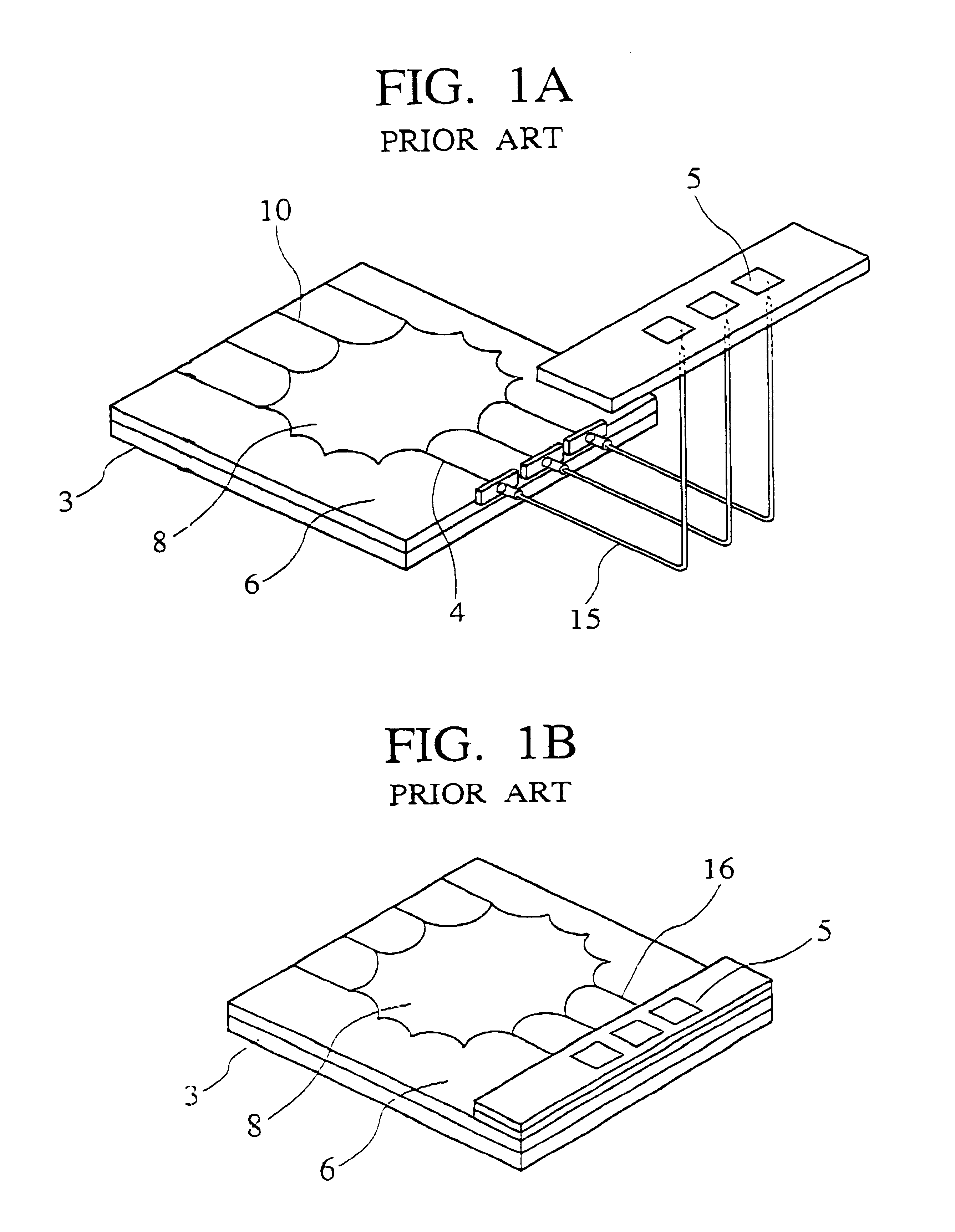Planar antenna for beam scanning
a scanning plane and beam technology, applied in the direction of individual energised antenna arrays, resonant antennas, particular array feeding systems, etc., can solve the problems of difficult to form a thin structure, difficult to reduce the size of the power feeding substrate 6, and large number of assembly steps, so as to achieve excellent thin structure and simplify the assembly process.
- Summary
- Abstract
- Description
- Claims
- Application Information
AI Technical Summary
Benefits of technology
Problems solved by technology
Method used
Image
Examples
example
As shown in FIG. 2, the beam scanning plane antenna according to an embodiment of the present invention is formed by stacking a beam scan antenna portion 102, a Rotman lens portion 103 and a system connecting portion 104 in order from top.
As shown in FIG. 2, the beam scanning antenna portion 102 is formed by stacking the first grounding conductor 11, the first dielectric 31, the power feeding substrate 61, the second dielectric 32 and the second grounding conductor 12 in order from top.
A plurality of antenna groups are formed on the power feeding substrate 61 by removing unnecessary copper foil from copper coated lamination film in which copper foil having the thickness of 35 .mu.m is bonded on polyimide film having the thickness of 25 .mu.m as its foundation material. Each antenna group is constituted of an irradiating element 50, a power feeding line 40 connected thereto and a first connecting portion 51 connected electromagnetically to the Rotman lens portion 103.
As the first gro...
PUM
 Login to View More
Login to View More Abstract
Description
Claims
Application Information
 Login to View More
Login to View More - R&D
- Intellectual Property
- Life Sciences
- Materials
- Tech Scout
- Unparalleled Data Quality
- Higher Quality Content
- 60% Fewer Hallucinations
Browse by: Latest US Patents, China's latest patents, Technical Efficacy Thesaurus, Application Domain, Technology Topic, Popular Technical Reports.
© 2025 PatSnap. All rights reserved.Legal|Privacy policy|Modern Slavery Act Transparency Statement|Sitemap|About US| Contact US: help@patsnap.com



